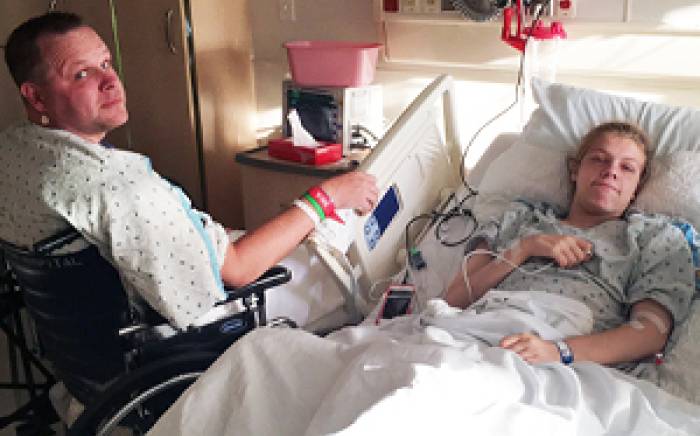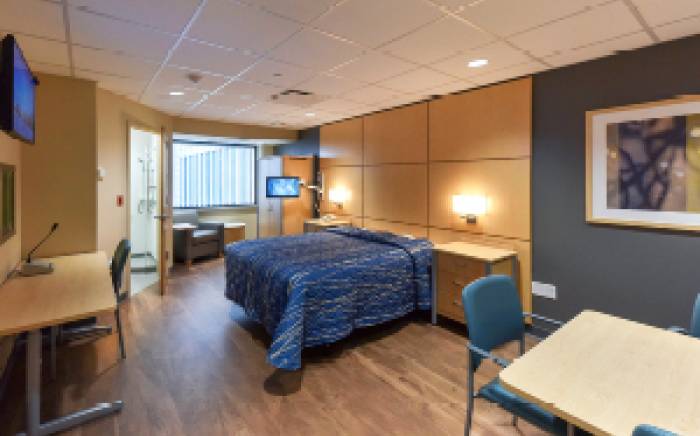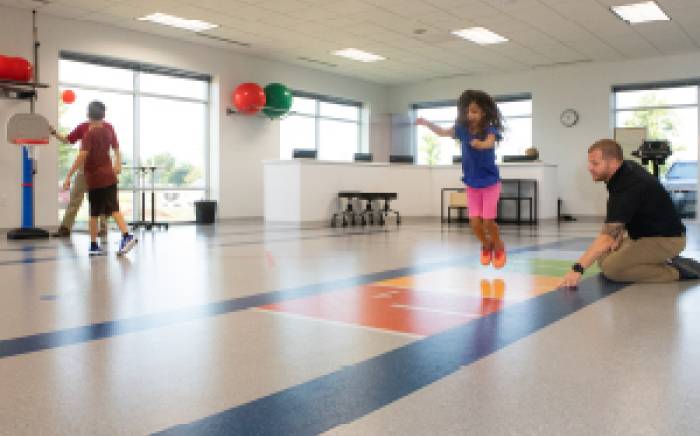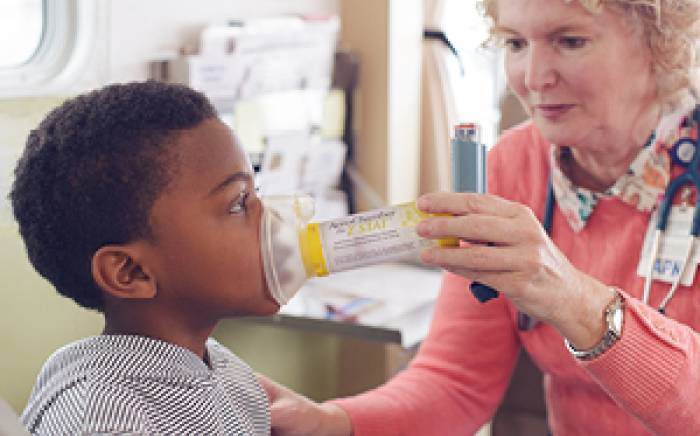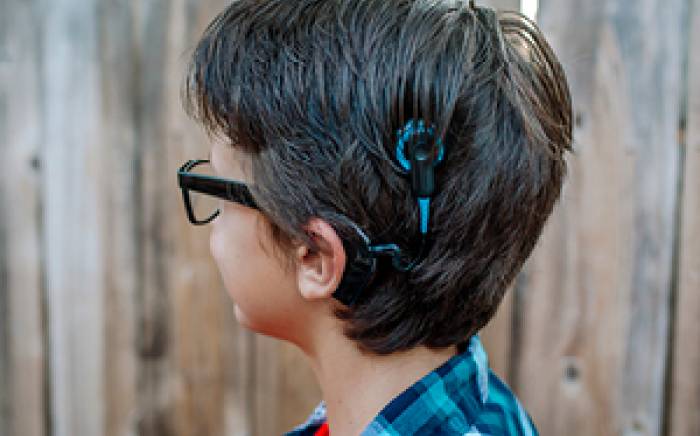 Seventeen times during the past two years at St. Louis Children’s (SLCH) and Barnes-Jewish hospitals, one donor liver has saved the life of one child and one adult. Called split-liver transplants, the latest occurred in August, when 2-year-old Gabriella received one-third of a donor liver and adult patient Synthia received the remaining two-thirds. It is a procedure made possible by the uncanny ability of the liver to regenerate, and pediatric and adult liver transplant programs that, after more than 30 years, are among the oldest and most experienced in the country.
Seventeen times during the past two years at St. Louis Children’s (SLCH) and Barnes-Jewish hospitals, one donor liver has saved the life of one child and one adult. Called split-liver transplants, the latest occurred in August, when 2-year-old Gabriella received one-third of a donor liver and adult patient Synthia received the remaining two-thirds. It is a procedure made possible by the uncanny ability of the liver to regenerate, and pediatric and adult liver transplant programs that, after more than 30 years, are among the oldest and most experienced in the country.
ALLOCATING DONOR LIVERS
The allocation of a donor liver is a complicated process. In simple terms:
- The donor liver is classified by blood group; each blood group has its own list of people awaiting transplant, with those who are sickest at the top.
- Pediatric donor livers generally are offered to pediatric and adolescent patients first.
- Adult donor livers go into the pool for both adults and children. Through a scoring process that determines the greatest need, an adult donor liver may be allocated to a pediatric patient.
“When this occurs, I assess the donor liver based on its size and the age of the donor. We only split young, healthy livers to ensure excellent function for both recipients,” says Washington University pediatric surgeon Majella Doyle, MD, surgical director of liver transplantation at SLCH. “In addition, the pediatric patient needs to be a certain size because older and larger children need either a half or full liver.”
Once Dr. Doyle determines that the liver can be split and that her pediatric patient is the right size to receive one-third of the liver, she contacts the transplant surgeon at Barnes-Jewish Hospital (BJH) to see whether there is a patient who fits the adult criteria for receiving a split liver.
“Again, the adult needs to be of a certain size since the transplanted portion of liver will be smaller and not suited for a larger person,” explains Dr. Doyle. “In addition, because of a slight increase in the risk of complications, the adult patient needs to be healthy enough to withstand the surgery.”
For the adult, that surgery involves using vessels from the donor to reconstruct the artery and sometimes veins since the bulk of vessels from the donor liver are transplanted into the pediatric patient.
“The liver is amazing because it is the only organ that can be partially split and then regenerate. It doesn’t grow back into the shape of a normal liver; it just grows in the shape that it is,” says Dr. Doyle. “In the adult, it regenerates to a size suitable for carrying out its vital roles in the human body. In the pediatric patient, it grows as the child grows.”
LIVER TRANSPLANT PROGRAM SUCCESS
With its long history, the Liver Care and Transplant Center at SLCH is among the most successful in the United States, with three-year survival rates of more than 90 percent, consistently above the national average. In addition to split-liver transplants, its pediatric liver transplant surgeons are skilled at whole liver, segmented/reduced liver and living donor transplants.
“One aspect that makes our program so unique is that we do transplants on very small babies, which can be incredibly challenging, requiring great focus and intensity. Forty-nine percent of patients we transplant are under 2 years of age; the youngest was just 10 days old,” says Dr. Doyle. “We often receive referrals from other hospitals because some programs don’t feel comfortable performing liver transplants on smaller children.”
She adds, “Our liver transplant team consists of transplant surgeons, transplant hepatologists, pediatric nurse practitioners, transplant coordinators, pharmacists, nutritionists, a child psychologist and a social worker. These are the experts who review all information with families whose child has liver disease. After a full, frank and extensive discussion, the team develops comprehensive pre-transplant and peri transplant care plans, guaranteeing the best care possible.”
Transplant Services at SLCH
St. Louis Children’s Hospital is one of the top pediatric transplant centers in the country, with programs dedicated to lung, heart, heart/lung, liver, kidney and bone marrow. Highlights for each include:
Lung transplant
- 1990–program established
- More than 440 lung transplants performed through 2017
- Patients drawn from across the world, including Israel, Mexico, Japan, Saudi Arabia, Canada and Australia
Heart transplant
- 1986–program established
- More than 460 heart transplants performed through 2017
- One of the largest and most active pediatric heart transplant programs in the country
Heart/lung transplant
- 1993–first heart/lung transplant
- 19 heart/lung transplants performed through 2017
Liver transplant
- 1985–program established
- More than 300 liver transplants performed through 2017
- Expertise in split-liver, whole liver, segmented/reduced liver and living donor transplants
Kidney transplant
- 1970–program established
- More than 310 kidney transplants performed through 2017
- One of the few programs in the country with expertise to perform transplants for children under 1 year of age
Bone marrow transplant
- 1991–program established
- 632 bone marrow transplants performed through 2017
- The first bone marrow transplant program in St. Louis created exclusively for children
- Youngest bone marrow transplant recipient–26 days old
- Longest-surviving bone marrow transplant patient–26 years
- 97 percent survival at 100 days post-transplant for autologous (self) transplants
- 90 percent survival at 100 days post-transplant for allogeneic (related and unrelated) transplants
To learn more about transplant services at SLCH, call Children’s Direct at 800.678.HELP (4357).


